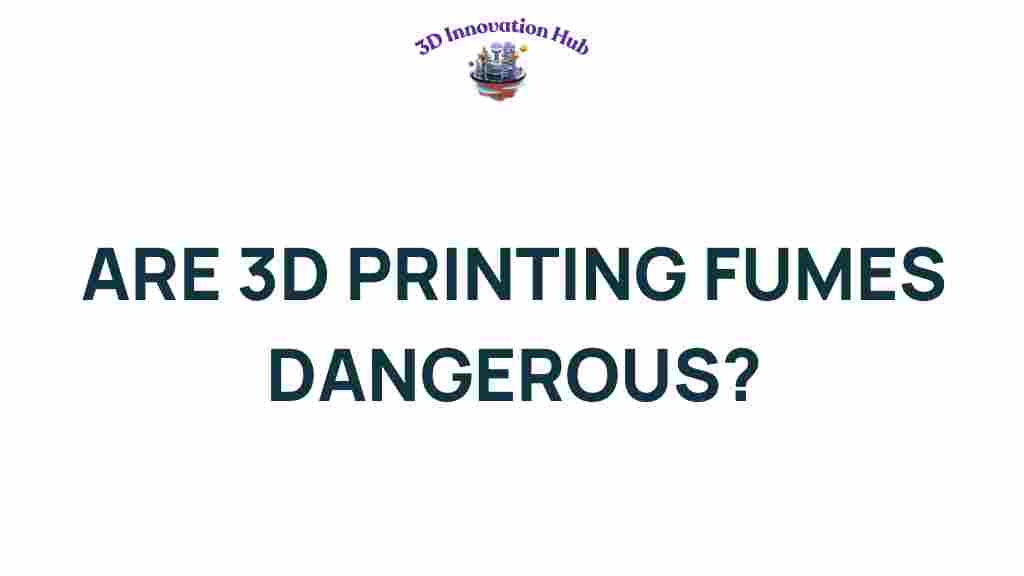Are 3D Printing Fumes Dangerous? Understanding 3D Printing Fumes and Their Health Risks
In recent years, 3D printing technology, also known as additive manufacturing, has gained immense popularity. From prototyping to production, it has revolutionized various industries. However, with this advancement comes a rising concern about 3D printing fumes and their potential health risks. This article aims to unveil the hidden risks associated with these emissions, explore safety measures, and discuss regulations to protect air quality and workplace safety.
The Science Behind 3D Printing Fumes
3D printers work by melting or softening materials like plastics, metals, or ceramics to create three-dimensional objects layer by layer. While the process is fascinating, it also produces fumes that can affect air quality. The type of materials used in 3D printing significantly influences the nature and composition of these fumes.
Common Materials and Their Emissions
The most common materials used in 3D printing include:
- PLA (Polylactic Acid): Derived from renewable resources, PLA is considered to produce fewer harmful fumes. However, it can still release ultrafine particles (UFPs) when heated.
- ABS (Acrylonitrile Butadiene Styrene): ABS is known for its strength but emits potentially harmful fumes, including styrene, which is classified as a possible human carcinogen.
- PETG (Polyethylene Terephthalate Glycol): This material is generally safer than ABS but may still release some UFPs.
- Nylon: Nylon can emit harmful compounds when melted, raising concerns about air quality.
Understanding the composition of emissions from these materials is crucial in assessing the health risks associated with 3D printing.
Health Risks of 3D Printing Fumes
Exposure to 3D printing fumes can lead to various health concerns. Here are some potential risks:
- Respiratory Issues: Inhaling ultrafine particles can cause respiratory problems, especially in poorly ventilated areas.
- Allergic Reactions: Some individuals may experience allergic reactions to specific materials or their emissions.
- Neurological Effects: Prolonged exposure to certain chemicals, like styrene, may lead to neurological issues.
- Carcinogenic Risks: Materials like ABS contain compounds that are classified as potential carcinogens.
Vulnerable Populations
Certain groups may be more susceptible to the effects of 3D printing fumes, including:
- Children and pregnant women
- Individuals with pre-existing respiratory conditions
- Workers in poorly ventilated spaces
Improving Air Quality and Ensuring Safety
It is essential to take proactive steps to minimize the health risks associated with 3D printing fumes. Here are some recommendations for improving air quality and ensuring safety:
Ventilation Strategies
Proper ventilation is crucial in any workspace where 3D printing occurs. Consider the following:
- Use of Fume Hoods: Installing fume hoods can help capture and filter harmful fumes.
- Local Exhaust Ventilation (LEV): LEV systems can effectively remove airborne contaminants at the source.
- Natural Ventilation: Opening windows and doors can improve air circulation, especially in smaller spaces.
Personal Protective Equipment (PPE)
Using appropriate PPE can further enhance safety while 3D printing:
- Respirators: Wear masks or respirators designed to filter out particulates and harmful gases.
- Gloves: Protect your skin from potential irritants.
- Protective Eyewear: Safety glasses can shield your eyes from splashes and airborne particles.
Regulations and Standards
As 3D printing becomes more widespread, regulatory bodies are beginning to pay attention to the health risks associated with 3D printing fumes. Here are some key points regarding regulations and standards:
- OSHA Guidelines: The Occupational Safety and Health Administration (OSHA) provides guidelines for workplace safety, emphasizing the need for proper ventilation and exposure limits.
- EPA Regulations: The Environmental Protection Agency (EPA) monitors air quality and may impose regulations on emissions from 3D printing processes.
- ISO Standards: International Organization for Standardization (ISO) standards help ensure safety and quality in additive manufacturing processes.
Staying informed about these regulations can help businesses maintain compliance and prioritize employee safety.
Workplace Safety Practices for 3D Printing
To enhance workplace safety, companies should implement comprehensive safety practices specific to 3D printing:
- Regular Training: Provide employees with training on the safe handling of materials and the importance of ventilation.
- Routine Maintenance: Ensure 3D printers are well-maintained to minimize emissions and malfunctions.
- Monitoring Air Quality: Utilize air quality monitors to track levels of UFPs and harmful gases in the workspace.
Troubleshooting Tips for Reducing Emissions
If you notice increased emissions or odors during 3D printing, consider these troubleshooting tips:
- Check Filament Quality: Low-quality filament may emit more harmful fumes.
- Adjust Temperature Settings: Lowering the printing temperature can reduce emissions.
- Inspect Ventilation Systems: Ensure that all ventilation systems are functioning correctly and are not obstructed.
Conclusion: Prioritizing Safety in 3D Printing
As the technology of additive manufacturing continues to evolve, understanding the implications of 3D printing fumes is vital. While 3D printing presents numerous benefits, it is crucial to recognize and address the health risks associated with these emissions. By implementing proper safety measures, adhering to regulations, and fostering a culture of workplace safety, we can enjoy the advancements of 3D printing while protecting our health and the environment.
For more information on workplace safety and air quality regulations, visit the OSHA website or explore resources on 3D printing technology.
This article is in the category and created by 3D Innovation Hub Team
